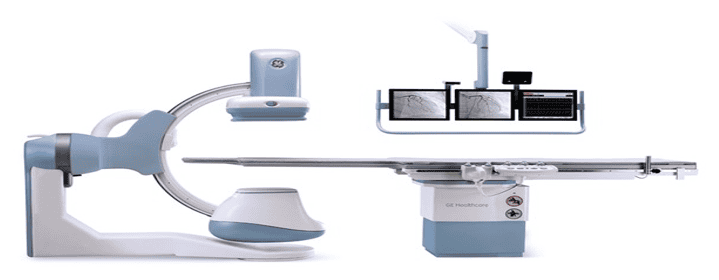Ожидается, что мировой рынок ангиографического оборудования продемонстрирует значительный рост в течение прогнозируемого периода. Северная Америка станет свидетелем самого высокого роста
Автор: Vikas Kumar
7 октября 2021 г.

ГлобальныйРынок ангиографического оборудованиябыл оценен примерно в 11,6 млрд долларов США в 2020 году и, как ожидается, превысит 18,0 млрд долларов США к 2027 году, демонстрируя среднегодовой темп роста (CAGR) более 6% в течение прогнозируемого периода (2021-2027). Ангиография — это процедура, используемая для визуализации кровеносных сосудов сердца, головы, почек или легких. Процедура выполняется путем введения контрастного вещества в артерии для исследования кровеносных сосудов. Ангиография выполняется с использованием рентгеновского излучения с катетерами, магнитно-резонансной томографии и компьютерной томографии.
Для детального анализа рынка ангиографического оборудования ознакомьтесь сhttps://univdatos.com/get-a-free-sample-form-php/?product_id=9680
Этот рост рынка объясняется ростом заболеваемости такими заболеваниями, как рак и сердечно-сосудистые заболевания, растущим количеством одобрений продуктов для передовых методов ангиографии на рынке, большим количеством текущих исследовательских работ, растущими государственными и государственно-частными инвестициями, увеличением количества информационных программ и растущим внедрением устройств для ангиографии из-за многих процедур ангиографии, выполняемых по всему миру.
Сердечно-сосудистые заболевания (ССЗ) являются основной причиной сердечных приступов, инсультов и других заболеваний системы кровообращения. По данным Всемирной организации здравоохранения (ВОЗ), в 2015 году от ССЗ умерло 17,9 миллионов человек, что составляет 31% всех смертей в мире, и ожидается, что к 2030 году это число вырастет до 23,6 миллионов. Следовательно, растущий спрос на ангиографические устройства стимулирует рост рынка.
Однако некоторые из ограничений на рынке — отсутствие возмещения расходов на процедуры ангиографии и риск радиационного облучения. Риск радиационного облучения и повреждения кожи, глаз и ДНК, а также возможность развития рака являются ключевым фактором, сдерживающим рост этого рынка.По данным Института исследований здоровья и безопасности Роберта Сове (IRSST) (Канада), в 2017 году от 3 до 10% всех новых случаев рака связаны с воздействием на рабочем месте, что составляет почти 1500–4900 новых случаев профессионального рака в Квебеке, Канада. По оценкам Национального совета по радиационной защите и измерениям в США, радиационное облучение от медицинских источников выросло с 15% в начале 1980-х годов до 50% в 2016 году в США.
С точки зрения применения, рынок ангиографического оборудования сегментирован на диагностику и терапию. Среди них сегмент диагностики занимал наибольшую долю рынка в 2020 году и, как ожидается, сохранит свою лидирующую позицию и в течение прогнозируемого периода. Большая доля этого сегмента в первую очередь объясняется увеличением численности стареющего населения и сердечно-сосудистых заболеваний.Например, болезни сердца являются основной причиной смерти для мужчин, женщин и людей большинства расовых и этнических групп в Соединенных Штатах. Один человек умирает каждые 36 секунд в Соединенных Штатах от сердечно-сосудистых заболеваний. Около 655 000 американцев умирают от болезней сердца каждый год — это 1 из каждых 4 смертей. Кроме того, разработки в области КТ-ангиографии и МР-ангиографии предоставляют соответствующую информацию не только в кардиологии, но и в неврологии, например, при церебральных аневризмах, остром инсульте, артериовенозной мальформации головного мозга, дуральной артериовенозной фистуле, подозреваемом церебральном васкулите и окклюзионных заболеваниях, что положительно способствует росту этого сегмента.
Запрос образца отчета можно найти по ссылкеhttps://univdatos.com/get-a-free-sample-form-php/?product_id=9680
Кроме того, в отчете представлены подробные инициативы, предпринимаемые в области ангиографического оборудования. Рынок классифицируется по различным регионам: Северная Америка (США, Канада и остальная часть Северной Америки), Европа (Германия, Франция, Италия, Испания, Великобритания и остальная часть Европы), Азиатско-Тихоокеанский регион (Китай, Япония, Индия, Южная Корея и остальная часть APAC), Остальной мир был изучен. Северная Америка доминирует на рынке ангиографического оборудования из-за увеличения численности пожилого населения и распространенности ССЗ. Другими факторами, стимулирующими рост регионального рынка, являются высокий уровень внедрения минимально инвазивных процедур, доступность возмещения расходов, рост пожилого населения и высокие показатели замены медицинского оборудования. Кроме того, хорошая сеть компаний по производству медицинского оборудования и наличие нескольких больниц в городах и штатах с хорошими возможностями финансирования положительно влияют на рост рынка в Северной Америке. Кроме того, увеличение поддержки со стороны государственных учреждений способствует развитию, необходимому для общего лечения сердечно-сосудистых заболеваний в секторе здравоохранения региона.Согласно данным, опубликованным Центрами медицинского обслуживания и услуг Medicaid (CMS), в Соединенных Штатах расходы на здравоохранение, как прогнозируется, будут расти в среднем на 5,5% в год в период с 2018 по 2027 год, достигнув почти 6,0 триллионов долларов США к 2027 году.
GE Healthcare, Siemens, Philips, Terumo Corporation, Abbott Laboratories, Boston Scientific Inc., Medtronic Plc, Canon Medical Systems, B. Braun, Cordis (A Cardinal Health Company). являются некоторыми из выдающихся игроков, работающих на мировом рынке ангиографического оборудования. Этими игроками были предприняты несколько слияний и поглощений наряду с партнерствами для разработки новых и инновационных продуктов
Глобальное ангиографическое оборудованиеСегментация рынка
Анализ рынка по продукту
- Решения для ангиографического оборудования
- Ангиографические системы
- Ангиографические катетеры
- Контрастные вещества для ангиографии
- Устройства для закрытия сосудов (VCD)
- Ангиографические баллоны
- Ангиографические проводники
- Аксессуары для ангиографии
Анализ рынка поТехнологии
- Рентгеновская ангиография
- КТ-ангиография
- МР-ангиография
- Другие
Анализ рынка поПроцедура
- Коронарная ангиография
- Эндоваскулярная ангиография
- Нейроангиография
- Другие
Анализ рынка по применению
- Диагностика
- Терапия
Анализ рынка по конечному пользователю
- Больницы и клиники
- Диагностические и визуализационные центры
- Научно-исследовательские институты
Анализ рынка по регионам
- Северная Америка
- Соединенные Штаты
- Канада
- Остальная часть Северной Америки
- Европа
- Франция
- Германия
- Италия
- Испания
- Соединенное Королевство
- Остальная часть Европы
- Азиатско-Тихоокеанский регион
- Китай
- Япония
- Индия
- Южная Корея
- Остальная часть Азиатско-Тихоокеанского региона
- Остальной мир
Основные профили компаний
- GE Healthcare
- Siemens
- Philips
- Terumo
- Abbott
- Boston Scientific
- Medtronic
- Canon Medical Systems
- Cordis (A Cardinal Health Company)
- B. Braun
Заказать звонок
